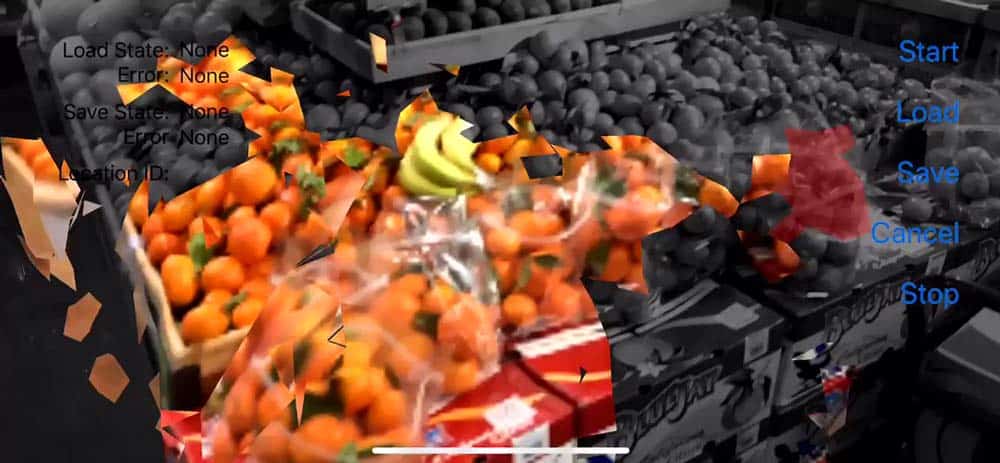Das Augmented-Reality-Startup “6D.ai” will den Jackpot der erweiterten Realität knacken: die AR-Cloud. Der Begriff bezeichnet ein 3D-Koordinatensystem, das sich wie ein Gitternetz über die Realität legt. In dieses Koordinatensystem können digitale Inhalte exakt in die Umgebung eingebettet und von allen AR-Nutzern entdeckt und genutzt werden. Zuvor muss eine Mammutaufgabe gelöst werden, denn für die AR-Cloud muss die Realität detailliert in 3D digitalisiert werden. Geht es nach 6D.ai, dann sollen Smartphone-Nutzer diese kleinteilige Aufgabe im Alltag übernehmen. Nach und nach sammeln einzelne Nutzer 3D-Informationen, die letztlich zu einer großen 3D-Karte zusammengeführt werden.
Auf einer Fachveranstaltung in San Francisco zeigte das Startup jetzt erstmals die Software auf einem iPhone X in Aktion, mit der dieses Unterfangen gelingen soll. Laut der Entwickler gelingt der folgende Scan mit einer einzelnen Kamera. Gemessen daran, dass Smartphone-Scan-Technologie noch ganz am Anfang steht, ist die Qualität durchaus beeindruckend. Man erinnere sich an die Auflösung der ersten VGA-Smartphone-Kameras – und welche Qualität die Knipsen heute bieten.
Falls die Qualität bei 3D-Scannern und -Scanverfahren langfristig ähnlich verbessert werden kann, könnten Menschen zukünftig Ereignisse und Orte vollständig in 3D einfangen und weitergeben. Denn so ein 3D-Scan ist einerseits Grundlagentechnologie für die erweiterte Realität, andererseits kann er mit einer VR-Brille begangen werden. Für fotorealistische Smartphone-Scans braucht es jedoch noch deutliche Fortschritte bei Scan-Technologie und mobiler Rechenleistung. 6d.ai will die Scan-App in den nächsten Monaten für Endverbraucher verfügbar machen. Bis dahin soll es noch einige Verbesserungen bei der Darstellungsqualität geben.
The augmented reality startup „6D.ai“ wants to hit the jackpot of augmented reality: the AR cloud. The term refers to a 3D coordinate system that lies over reality like a grid. In this coordinate system, digital content can be embedded exactly into the environment and discovered and used by all AR users. A mammoth task has to be solved beforehand, because for the AR cloud reality has to be digitized in detail in 3D. If 6D.ai is the answer, then smartphone users should take on this small-scale task in everyday life. Step by step, individual users collect 3D information, which is then merged into a large 3D map.
At a specialist event in San Francisco, the startup now showed the software on an iPhone X in action for the first time, with which this project should succeed. According to the developers, the following scan succeeds with a single camera. Considering that smartphone scan technology is still in its beginnings, the quality is quite impressive. Remember the resolution of the first VGA smartphone cameras – and the quality of the shots today.
If the quality of 3D scanners and scanning methods can be improved in a similar way in the long run, people could capture events and places completely in 3D and pass them on in the future. Such a 3D scan is on the one hand a basic technology for augmented reality, on the other hand it can be viewed with VR glasses. For photorealistic smartphone scans, however, significant advances in scan technology and mobile computing power are still needed. 6d.ai wants to make the scan app available to end users in the next few months. Until then there should be still some improvements with the representation quality.
Source: https://vrodo.de/iphone-x-demo-so-flott-scannt-es-die-umgebung-in-3d-ein/

